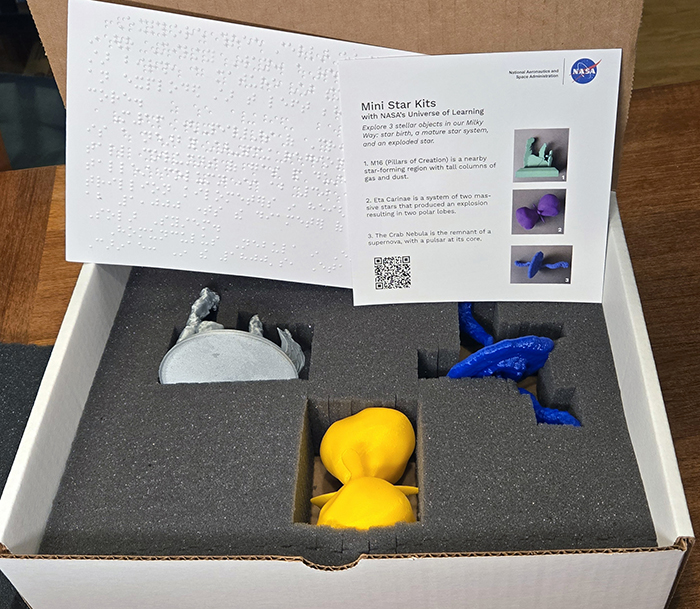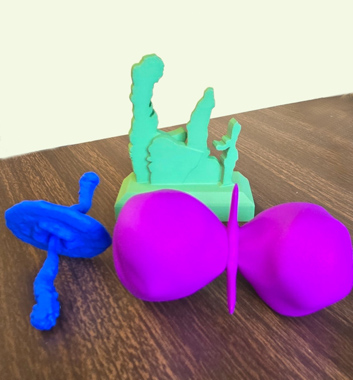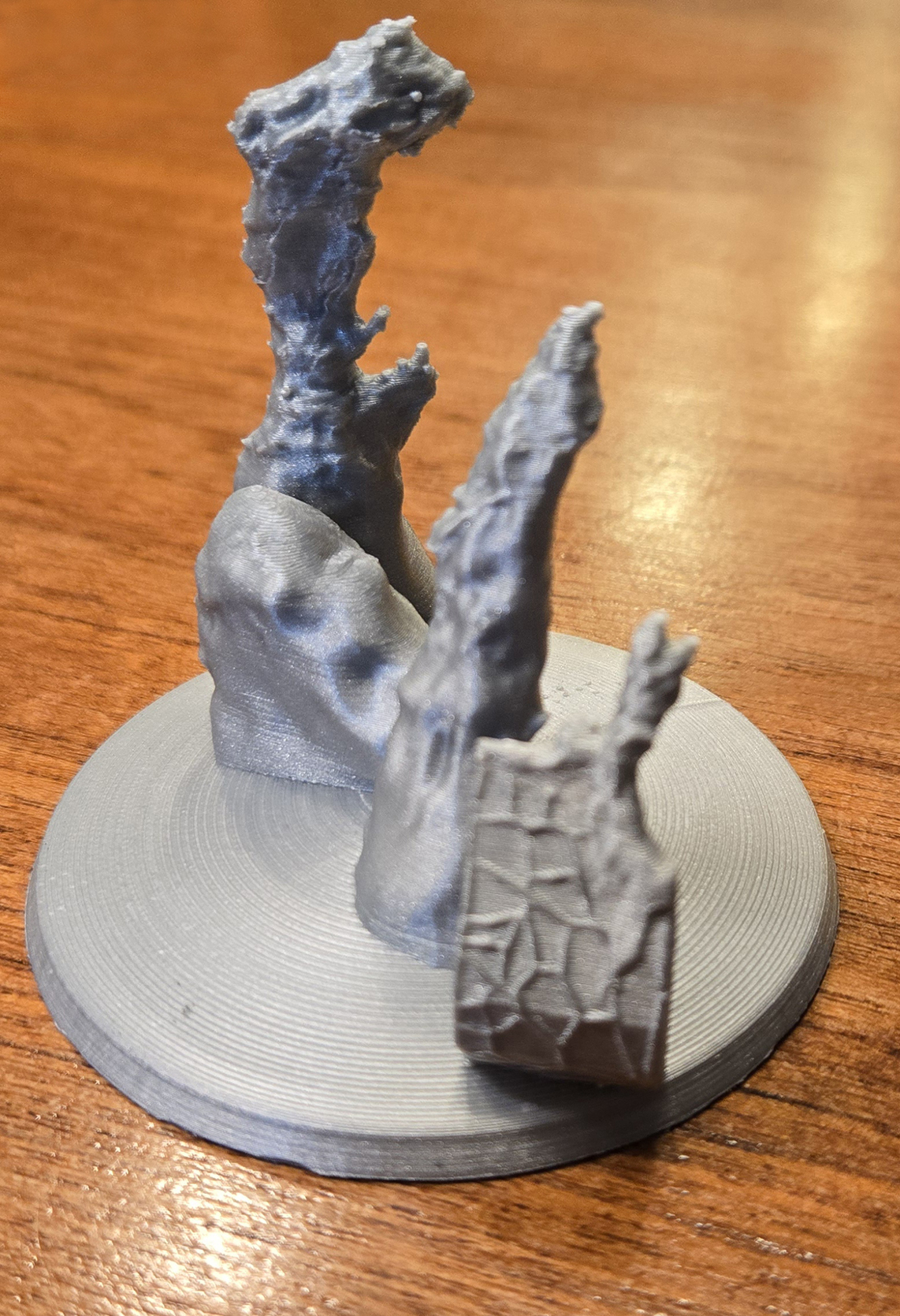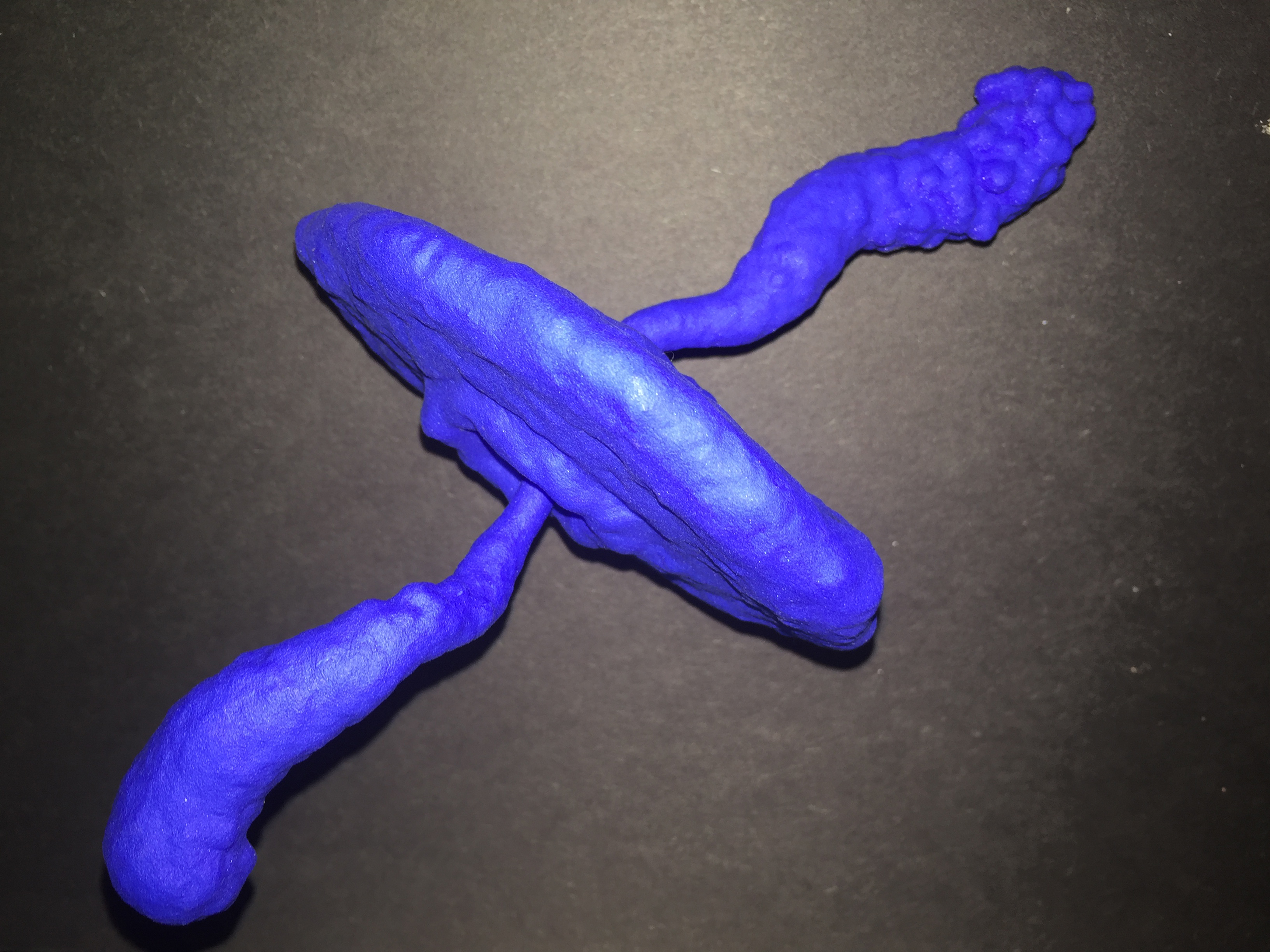Mini Star Kits
with NASA's Universe of Learning

Our Milky Way galaxy contains several hundred billion stars of all ages, sizes and masses – and there are billions of galaxies in the Universe. One of the central quests of astronomy is to understand how these stars form, shine for millions or billions of years, and eventually die.
A star forms when a dense cloud of gas collapses until nuclear reactions begin deep in the interior of the cloud and provide enough energy to halt the collapse. But the fate of a star depends on its mass.
This mini stars kit explores three examples of stellar objects in our own cosmic backyard, the Milky Way galaxy, that we can feel in 3D through the mapping of direct observations in the sky. The set includes a region of star birth (Pillars of Creation), a mature star system (Eta Carinae), and an exploded star that left behind a dense core (Crab Nebula). We include descriptive text along with data sonifications of each objects. Data sonifications are mathematical translations of the data into sound.
Here's what you'll find inside:
Mini Stars Kits
• Mini star kits include 3 3D prints (shown below): :
-Supernova remnant / pulsar Crab Nebula
-Star system Eta Carina
-Star formation Pillars of Creation (M16/ Eagle Nebula)
• Audio files with descriptions of each of the 3 3D-printed objects.
• Sonifications for each of the 3 objects.
• A descriptive handout in text and Braille formats.

M16, also called the Pillars of Creation, is a nearby star-forming region. The Pillars, which are sometimes called elephant trunks due to their shape, are an example of the column-like shapes that develop in giant clouds of gas and dust that are the birthplaces of new stars. This 3D model depicts details about the orientation of the Pillars in space, mostly that the Pillars actually consist of several distinct pieces on either side of a star cluster. In this model, note that the relative distance between the pillars is not to scale.
This 3D print of M16 is based on data from the European Southern Observatory's Very Large Telescope with data from the Hubble Space Telescope.
Listen to the M16/Pillars of Creation audio description

The Crab Nebula is the remnant of a massive stellar explosion, or supernova, that was seen on Earth in 1054 AD. The nebula is about six light years across, or 60 trillion kilometers, and expanding outward at about 3 million miles per hour. At the center of the bright nebula is a rapidly spinning neutron star, or pulsar, that emits pulses of radiation 30 times a second. In this 3D print of the inner region of the nebula you'll notice a ringed disk, which is made up of energized material. Additionally, there is a pair of jets of particles firing off from opposite ends of the pulsar (the pulsar is hidden inside the ringed disk and can’t be felt).
This 3D print of the Crab Nebula is based on X-ray data from NASA’s Chandra X-ray Observatory.
Listen to the Crab Nebula audio description

In the middle of the 19th century, the massive binary system Eta Carinae underwent an eruption that ejected at least 10 times the sun's mass and made it the second-brightest star in the sky. As a part of this event, which astronomers call the Great Eruption, the gaseous shell formed a twin-lobed dust-filled cloud known as the Homunculus Nebula, which is now about 10 trillion kilometers long and continues to expand at more than 2.1 million kilometers per hour. This 3D print of the Homunculus Nebula reveals protrusions, trenches, holes and irregularities in the gaseous material.
This 3D print of Eta Carinae is based on data from the European Southern Observatory's Very Large Telescope with data from the Hubble Space Telescope.
Listen to the Eta Carinae audio description

For more information visit
https://chandra.si.edu/tactile/
https://chandra.si.edu/sound/
All photos on the page, credit: NASA/CXC
Acknowledgements: This kit was developed with support from NASA's Universe of Learning (UoL). UoL materials are based upon work supported by NASA under award number NNX16AC65A to the Space Telescope Science Institute, working in partnership with Caltech/IPAC, Jet Propulsion Laboratory, and Smithsonian Astrophysical Observatory. Additional funding comes from NASA under contract NAS8-03060 with NASA’s Chandra X-ray Observatory through the Smithsonian Astrophysical Observatory. All photos on the page, credit: NASA/CXC
cxcpub@cfa.harvard.edu
617-496-7941
60 Garden Street,
Cambridge, MA 02138 USA
Art Direction/Design: Kristin DiVona
Web Developer: Khajag Mgrdichian
Chandra X-ray Center, Operated for NASA by the Smithsonian Astrophysical Observatory. This site was developed with funding from NASA under contract NAS8-03060 | Privacy | Accessibility
Additional support from NASA's Universe of Learning (UoL). UoL materials are based upon work supported by NASA under award number NNX16AC65A to the Space
Telescope Science Institute, working in partnership with Caltech/IPAC, Jet Propulsion Laboratory, Smithsonian Astrophysical Observatory.

